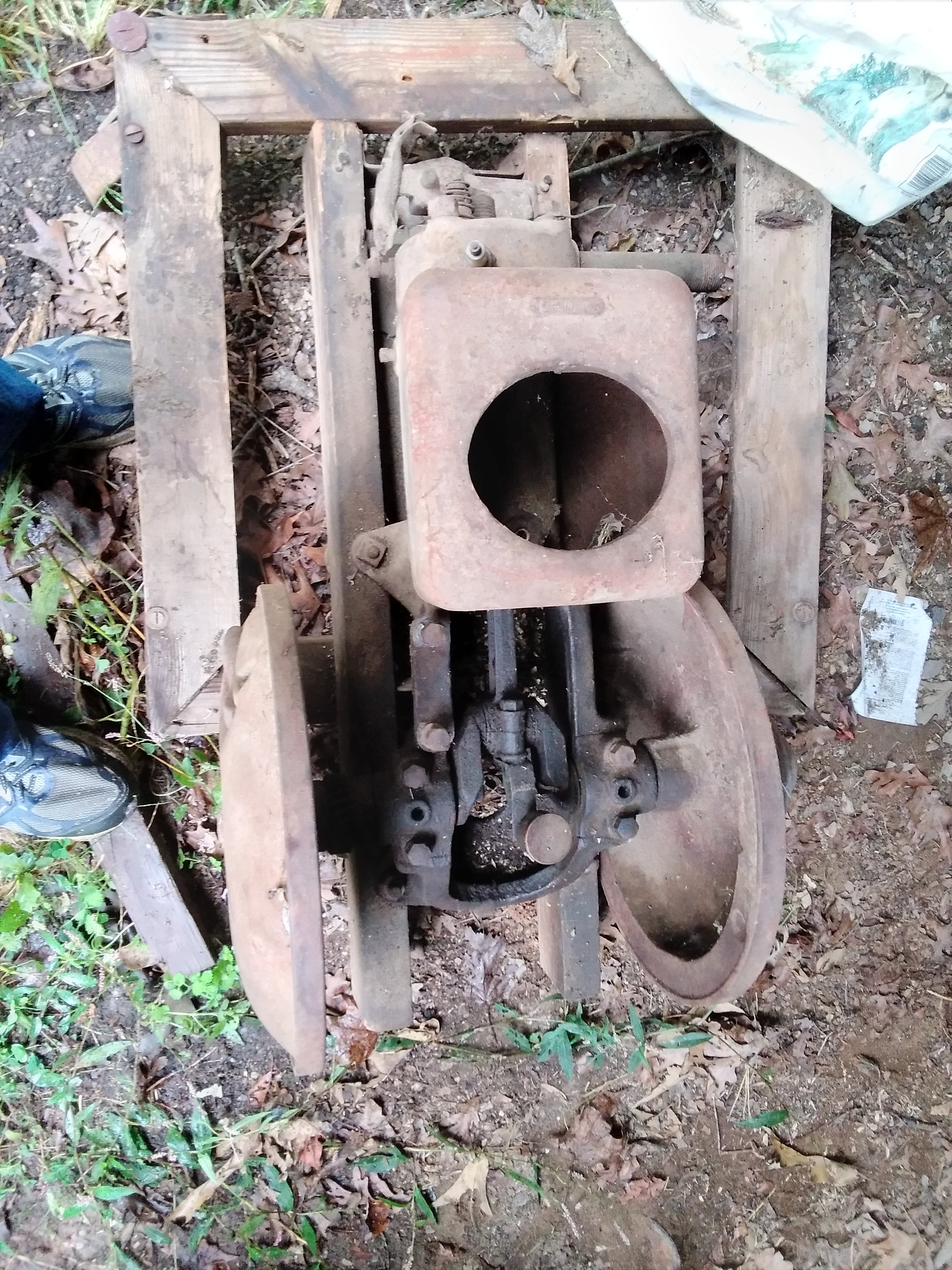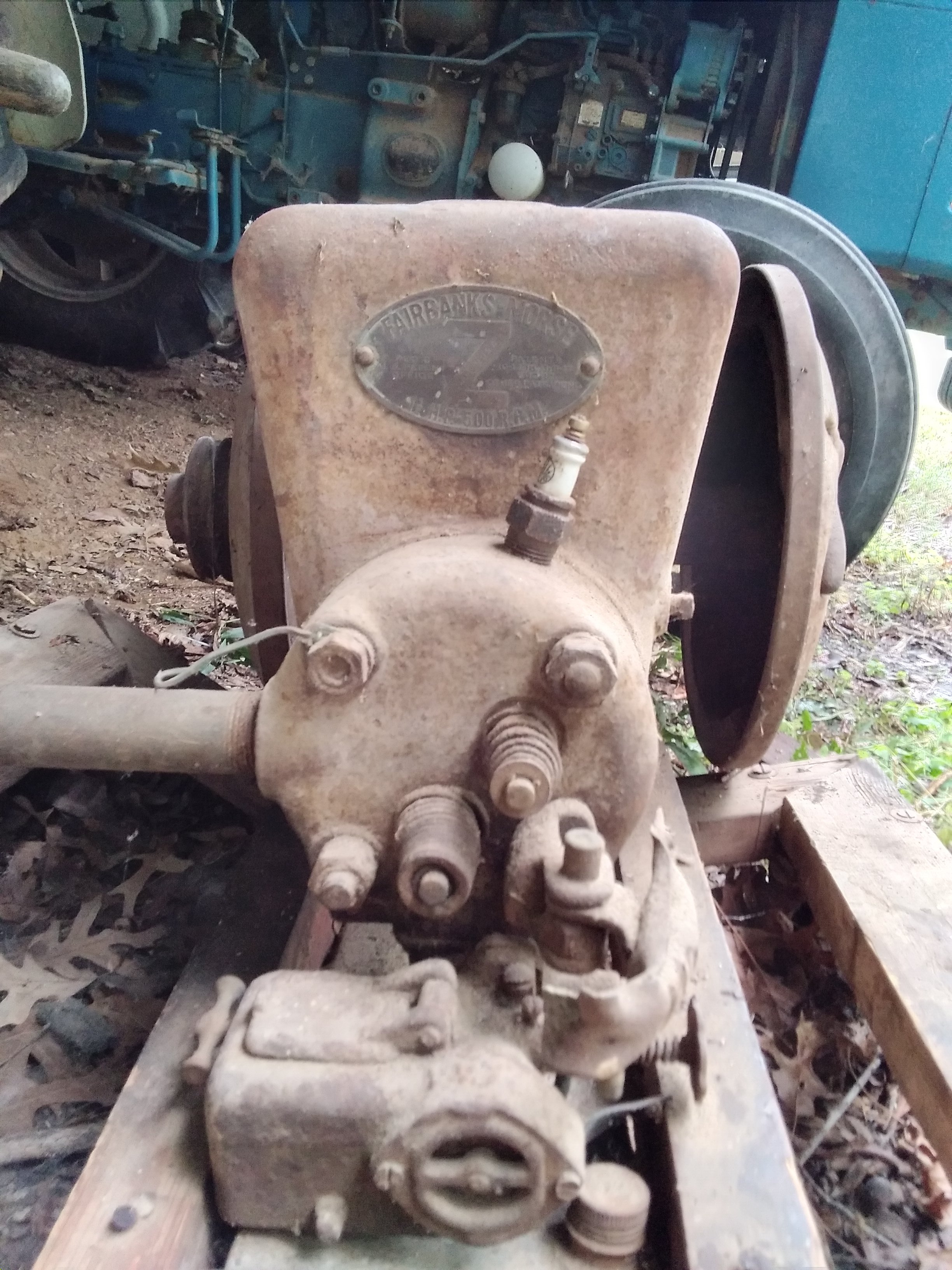This engine became the first of my stationary engine collection, three weeks before the begining of the COVID pandemic in 2020. After the onset of the pandemic, this engine got put into storage until I was able to seek help from others. After about two years of setting in storage, I decided it was time to get started.
Here are a few pictures of the engine right after I first purchased it.


The first thing I noticed was that the engine wasn't free (so I thought). Applied a generous amount of penetrating lubricant around the cylinder, and with a little persuasion, it would now spin! The excitment ended far too soon, after realizing it wasn't the piston that was stuck, but that the governor assembly had siezed. When the engine finally turned, the governor had broken off the block. First lesson learned: always investigate all connected parts of a system, and never push too hard! This set me on the search for a new governor. I was able to locate one from Rosevink Engines. This got me well on my way to getting this engine together!
The next steps was to get everything cleaned up. I cleaned all the old dry greese from the bearings. The piston was pulled and the cylinder cleaned out. I also completely rebuilt the carburator. A few more details, and it was time to give this engine an initial test.
As you can see from the video, the inital run was very rough. It took a lot more tweeking, but finally got it running smooth. Here, you can see the engine running much further along in the restoration process.
After taking this engine to Cotton Ginning Days, I have been able to spot several issues with its operation. Running an engine for 10 hours a day over an entire weekend will point out any issues that exist.
I would like to thank my friends Curt Holland and Tommy Berry for their help on this project. Without their guidance, this would have never became a reality. I would also like to thank Bessemer City Machine for their expertise in producing parts.